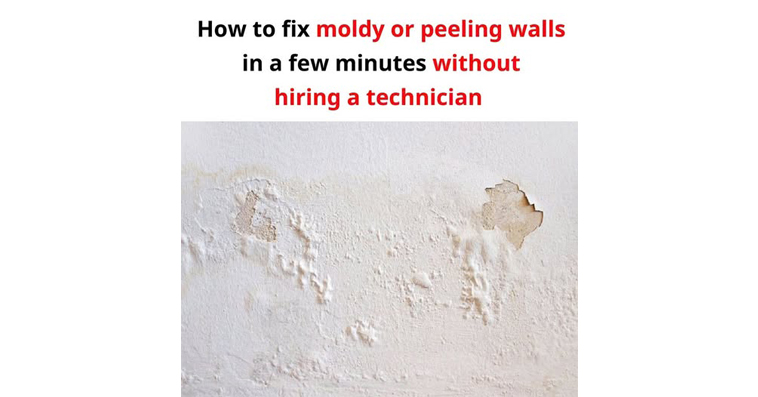Over time, walls in your home may develop mold, blister, or peel, especially during the rainy season when dampness becomes more prevalent. These issues can make your home look unappealing and even pose health risks. While hiring professionals is a common solution, you can tackle these problems yourself using simple, cost-effective methods. Here’s how to restore your walls and keep them looking pristine.
Mold Treatment
Step 1: Remove visible mold.
Use a dry toothbrush to gently scrub away mold spots. Then, wipe the affected area with a soft cloth soaked in alcohol. This helps dry the wall and discourages further mold growth.
Step 2: Treat the mold with a bleach solution.
Mix bleach and water in a 1:99 ratio, pour the solution into a spray bottle, and spray it on the moldy spots. For more severe mold during humid weather, use a stronger bleach mixture of 1:20.
Once the wall is dry, sand the surface to make it smooth. Apply a waterproof primer before repainting to prevent future mold caused by moisture.
Blistering Walls
Blistered walls typically result from moisture or poor wall preparation. Here’s how to fix them:
Step 1: Remove blistered paint.
Scrape off any blistered or peeling paint. If the issue is caused by poor-quality wall filler, remove it and replace it with a higher-quality product.
Step 2: Treat small blisters.
Scrape off the affected area, smooth the edges, apply primer, and repaint.
Step 3: Address larger blisters.
Remove the entire damaged section, allow the wall to dry completely, and reapply plaster before repainting.
Step 4: Prevent blistering.
Ensure proper waterproofing during home decoration and repair any cracks in the walls. Avoid painting during the rainy season and use primer and paint from the same brand for optimal results.
Peeling Walls
Peeling walls can create an unsightly appearance and contribute to dust and cleanliness issues. Here’s how to resolve the problem:
Step 1: Remove peeling paint.
Scrape off the peeling areas, remove any old filler, and smooth the edges with sandpaper. Apply primer before repainting.
Step 2: Treat severe peeling.
For extensive peeling, remove the damaged wall layer entirely. Treat the surface with primer and repaint to restore the wall.
Step 3: Test filler quality for heavily peeling areas.
Spray water to dampen the section and scrape off the peeling paint. If no dust falls off during scraping, the original filler quality is good. Sand the area smooth, then apply primer and paint as needed.
By following these straightforward steps, you can restore your walls to their former glory without hiring a professional. Not only will you save money, but you’ll also maintain a clean and polished look for your home.



